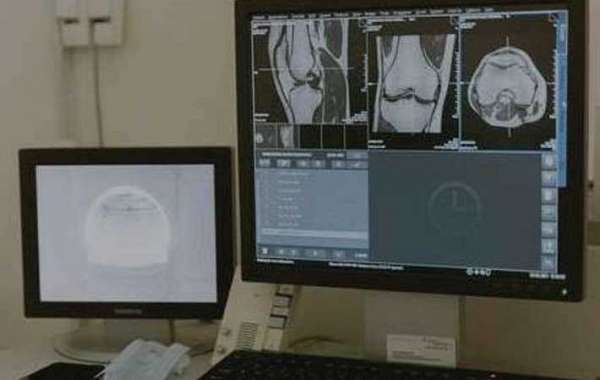Teleradiology is a 21st century medium of interpreting radiological images ( CT scan, MRI, XRAY, Ultrasounds) with the potential to get the best results irrespective of time or place.
India is recognized to have provided many trained personnel in the IT field, customer care, health telemedicine across the globe.
Before April 2020 teleradiology in India was confined to a handful of service providers. However, on March 25th, 2020 Ministry of the health of India officially made teleconsultations legal. On top of that, the outbreak of the COVID-19 pandemic led to a surge in Indian teleradiology providers in order to answer the need for huge volumes of HRCT chests done at every level from tier 3 to tier 1 city.
During the pandemic, teleradiology was embraced by many radiologists in India as it could compensate for reduced ultrasound cases without risk of getting infected. As a result, many teleradiology service providers have emerged in India and are functioning presently.
As a client or hospital, settle what you want first putting your patient at the center. Whether you want to answer specific issues (such as night emergencies, delayed TAT, etc) or to enhance the quality of radiology services ( to improve the quality of reads and TAT).
With our experience of 12 years in this sector, we have put together handy tips that will guide you through choosing the best teleradiology service provider in India.
Quality of Teleradiology Service Provider
It’s tough to assess the impact of any diagnostic health Care Service by any sort of ratio or statistics. Referring Clinician satisfaction and client retention can be good indicators in general for assessing the quality of a given teleradiology Service Provider. Before signing a service level agreement the client should ask for access to prior reports by each of the Radiologists from the given Teleradiology Services provider or sample reports and check the profoundness by reporting style. Going one step further one may ask for a trial by assigning some random cases to the provider as per your needs. For example, an Orthopaedic Hospital can assign a few trial prediagnosed MRI joints or CT scan trauma studies with subtle tiny fractures. Or a General Hospital client can assign proven cases such as pulmonary embolism, acute appendicitis, thin subdural from the Emergency Room to test the efficiency.
Hence it is necessary to integrate into the partnership deal with the teleradiology provider, a Continuous Quality Improvement (CQI).
Analyzing the peer review system in the workflow as to how it works, how quickly the images are routed for peer review can be important.
Assessment of experience of all reporting Radiologists in the field of required modalities and subspecialties is an important factor. Indian Radiology Practise is highly modality driven. The majority of radiologists in India practice ultrasound but do part-time teleradiology in a particular time slot or on weekends. You may have a Radiologist with 10 years of experience on his CV but is only occasionally reporting gastrointestinal CT scans or MRI joints.
Large versus Small Panel Teleradiology Service Providers
The size of the teleradiologist’s panel is an important criterion for searching for the right match for your organization. The optimum size of the panel to cover all 24 hours is important at the same time stability of the teleradiologists with constant names is key to develop trust for a long term relationship with the referring clinician. Hiring a large panel of teleradiologists for a small hospital will doesn’t make sense always. Generally, large panel radiologists have a high turnover rate. Continuously changing the names of the radiologists will hamper the trust-building between the referring surgeon and the teleradiologists.
Besides panel size turnover rate of radiologists may indicate the stability of the group. Large panel teleradiology providers in India generally comprise multiple part-time radiologists who otherwise are doing ultrasound practice at their clinics. Such groups may lack a teleradiology culture. Imagine a CT abdomen scan for a suspected case of bowel perforation being read by a sonologist within his time slot provided by the telerad provider who is looking for gas under the diaphragm on the scanogram.
In contrary to an experienced teleradiologist who is reporting hundreds of CT scans a day sitting for hours in his office who is trained to look for even a tiny extraluminal air.
In contrast to the large groups small but stable panels of teleradiology service providers who are full-time teleradiologists are at an advantage of building trust and a comfort level with the referring clinicians due to low turnover rates.
We need to understand the difference between the optimum sized panels of stable, full-time teleradiologists versus large panels of revolving part-time radiologists.
Most of the large groups employ radiologists who are full-time ultrasonologists and reports cross-section studies (CT or MRI scans) on a part-time basis or on weekends, so the size of the teleradiology panel is a factor in bethinking. However, the large panels have many panel radiologists needed to provide coverage which is an advantage.
Communication Of Critical Findings And Coverage
In emergency cases, the consequences for the patient can be severe if there is no direct communication between the referring surgeon or critical care physician and the reading radiologist.
Ideally, a teleradiology service provider should have a protocol outlined for the proactive steps required to communicate the emergency findings or unexpected findings. For example, the policy may be only to contact the referring clinician on phone in the case of a life-threatening disease or other situations such as clinically unsuspected cases such as metastasis. Also, it is equally important that the reporting radiologist himself receives the call immediately to clarify the clinician’s doubt in an emergency situation. The use of mobile SMS or WhatsApp can add value.
Needless to mention, a good teleradiology service provider should be covering 24/7 for 365 days.
Work Flow and Turnaround Time
Turnaround time is the time frame between when the request of a teleradiology service provider is ordered and when the report is sent back. A good turnaround time for acute stroke should be between 10 to 30 minutes. Teleradiology service providers must have a case prioritization feature inside the PACS software. However, it is also important to give the reporting teleradiologist a comfortable environment by allowing longer Turn around time for nonemergent subspeciality focus cases.
Technology and Infrastructure
As far as IT infrastructure is concerned there are three types of teleradiology service providers in India
1. self-developed commercial IT and reading services.
2. teleradiology reading service providers that have developed their own IT ( although IT is not available commercially).
3. teleradiology reading service providers using third-party IT solutions.
HIPAA compliance
Health Insurance Portability and Accountability (HIPAA) rule that guard patient information about their health. For a standard teleradiology service provider, it is necessary to comply with HIPAA rules, which are concerned about the privacy and security of patient information.
Teleradiology services in India are in general 20 to 40% cheaper compared to US telerad providers.
At the end, before hiring a teleradiology partner one should be clear about the goals your organization wants to achieve. An Indian teleradiology partner can be equally effective as a USA teleradiology provider if chosen appropriately.









